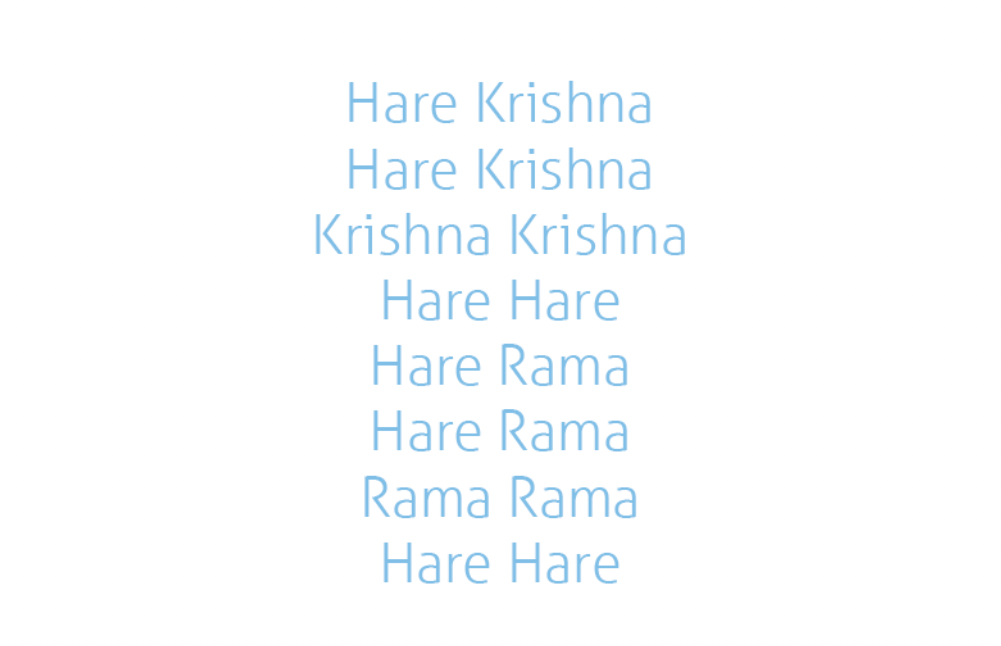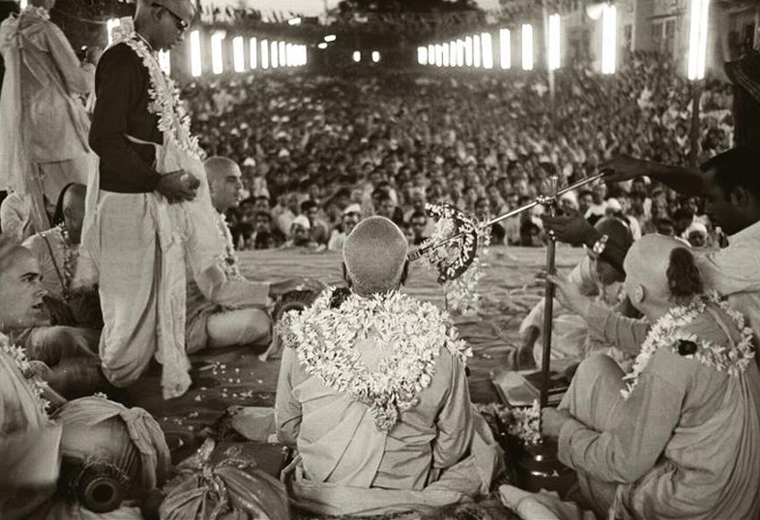Biography
A.C. Bhaktivedanta Swami Prabhupada
1896-1915 Religious upbringing, Vaisnava roots
Srila Prabhupada was born on 1 September, 1896 in Calcutta India. He was named Abhay Charan De but he was called Nandu as a nickname because he was born on Nandotsava, the day after Krishna’s birthday.
His family practised Gaudiya Vaishnavism (Krishna Consciousness). His father, Gour Mohan De, was a successful merchant and an exceptional devotee who brought up his son to follow in his footsteps. Gour Mohan De dreamt of a Vaisnava future for his son, he introduced him to Vaisnava culture and when little Abhay at the age of six or seven wanted to practise certain aspects of his religion, Gour Mohan De helped and supported him in every way possible. He regularly invited sadhus (saintly sages) to their home and always asked them to bless his son.
1916-1936 College years and accepting a spiritual master
Young Abhay read philosophy, economics and English at Scottish Church College and graduated with outstanding results. During his student years he became influenced by Gandhi’s independence movement and he was so taken by the idea of an independent India that responding to Gandhi’s call, despite finishing his studies and passing all his exams he refused to accept his diploma in protest to English oppression.
In 1922 he met his spiritual master, Bhaktisiddhanta Sarasvati Thakura, one of modern India’s greatest Vaishnava saints. Bhaktisiddhanta was a scholar and polyhistor of exceptional talents. He established several Gaudiya Vaisnava monasteries in the Indian subcontinent. In his lectures he pointed out that the goal of the independence movement is temporary, not eternal or spiritual and this left a deep impression on Abhay.
Abhay Charan De later moved from Calcutta to Allahabad and tried to make money as a pharmaceutical salesman to maintain his family but as time went on he increasingly turned toward spiritual life. In 1932, 11 years after their first meeting, Bhaktisiddhanta Sarasvati gave formal spiritual initiation to Abhay. During the next four years, Abhay met his spiritual master a dozen times and he was privileged to receive his special attention. In their talks, Bhaktisiddhanta told Abhay several times that he wants Vaishnavism spread all over the world through the media of book printing and publishing.
1936-1964
Bhaktisiddhanta Sarasvati left this material world at the age of 63, in December 1936. A month before his passing he wrote a letter to Abhay and he told him: “You can explain in English our thoughts and arguments to those who don’t speak these languages (Bengali and Hindi). This will do much good to yourself as well as your audience. I have every hope that you can turn yourself into a very good English preacher.”
During the years that followed, on the request of his spiritual preceptor, Abhay Charan De wrote an English commentary to the verses of one of the most authoritative Vaishnava scriptures, the Bhagavad-gita. In 1944, while the world was engulfed in the horrors of the Second World War, Abhay expounded the message of peace and pure devotion to God on the pages of Back to Godhead magazine, which he single-handedly wrote, published and distributed.
In 1950, at the age of 54, Abhay renounced family and worldly life in keeping with the Indian tradition. With great determination he retired completely, received sannyasa initiation (entered the renounced order of life) and moved to the holy place of Vrindavan to dedicate his life to translating the 18,000 verses of the Srimad Bhagavatam (Bhagavata Purana).
1965-1977
On the request of his spiritual master, Bhaktivedanta Swami (Abhay’s sannyasa name) embarked on his greatest and most dangerous undertaking on 13 August, 1965. At the age of 69, with seven dollars in his pocket, he boarded a cargo ship en route to the United States of America to propagate Vaishnava teachings in the Western world. He suffered from seasickness and had a number of heart attacks on board the ship but he was strongly convinced that the Lord would protect him so he could fulfill his mission.
His impossible mission soon turned out to be successful. After extraordinary efforts and due to his pure devotion in 1966, within a year of his arrival, he incorporated the International Society for Krishna Consciousness (ISKCON). This formal registration gave a structure that is recognised in the West to his mission of spreading Krishna consciousness, or Vaishnavism, a tradition, which is tens of thousands of years old and has about 600 million followers. His preaching efforts were very successful and the honorific title ‘Srila Prabhupada’ was given to him by his young disciples.
In the course of the next decade, Prabhupada opened 108 temples in important cities around the world, accepted and initiated thousands of disciples irrespective of their age or background. He established self-sufficient farm communities, schools providing religious education and vegetarian restaurants open for all to propagate nonviolence. He travelled round the globe fourteen times to give lectures and wrote more than 50 volumes of translations and commentaries to major Indian scriptures. To this day, many respect him as one of India’s scholars, philosophers and cultural emissaries. According to the 1976 Britannica Book of Year, “Srila Prabhupada astonished academic and literary communities worldwide by writing and publishing fifty-two books on ancient Vedic culture . . . in the period from October 1968 to November 1975.”
On 14 November, 1977, Srila Prabhupada left this material world at the age of 81. He passed away surrounded by his loving disciples in the holy place of Vrindavana, the birthplace of Lord Krishna. Due to his efforts, Vaishnavism became well known all over the world and so many in the Western world have accepted bhakti, devotion to Krishna, as a means of self-realisation.
(Krishna devotees commemorate Srila Prabhupada’s appearance day following the moon calendar so the ceremony is held on the day after Janmastami but on different dates each year according to the Western calendar. The event includes prayers and a joyful celebration.
More detailed information on our founder: www.founderacharya.com
Magyarországi Krisna-tudatú Hívők Közössége 1039 Budapest, Lehel utca 15-17. [email protected]





